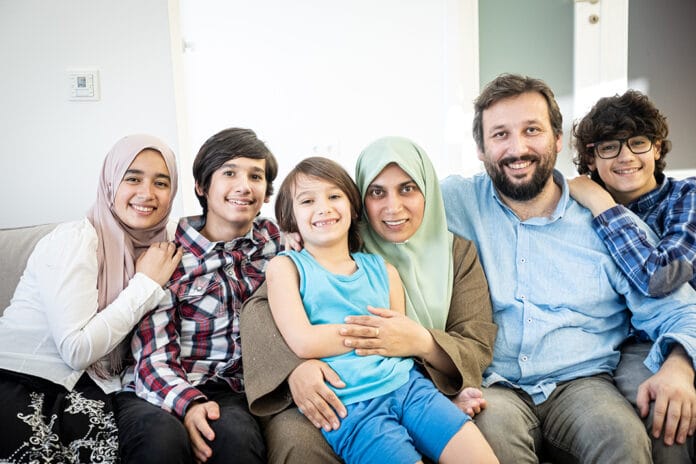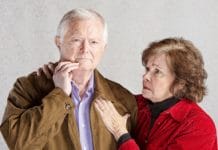One of the major things that the class of 2021 missed during the senior year of dental hygiene school was community rotations. COVID made it impossible to go to many places that we might have gone otherwise, such as senior homes, Head Start schools, etc. When the time came to do community dental outreach projects, educating about oral hygiene to people in different walks of life, dental hygiene students had to be creative in finding alternatives.
A Community Project from a Research Paper
My friend and I did our research paper on the oral conditions of refugee children during the third semester. Even at the conception of the research topic, our community teacher suggested that we evolve our research paper into some sort of community outreach project. My friend and I soon became very passionate about this project as we found that the children in these refugee communities suffer from oral health issues due to multiple factors.1
Some of the factors that we found for poor oral health among refugee children were the roles of diet, language, and culture;1 the lack of dental knowledge among mothers;3 fear;4 and financial struggles.2 The more we studied this issue, the more we wanted to help these underserved pockets in our city. When planning the project, we contacted a nonprofit organization that worked with Afghan refugees in the Dallas, Texas, area. The goal was to educate mothers and children about preventable problems such as dental caries by giving proper brushing techniques and oral hygiene instructions.
The supervisor of the nonprofit told us that about 20 to 25 mothers and their children would attend the session. This specific Afghan refugee community was concentrated in one big apartment complex. The supervisor suggested that we should do our presentation in open air in a schoolyard behind the apartments as a precaution against COVID. We decided to do the presentation on a Saturday so all the children could attend it as well.
Implementing the Project
Armed with typodonts, stuffed toys, oral hygiene products, face masks, and sanitizers, my research buddy, myself, and another classmate arrived at the designated location. The mothers with their kids soon started trickling in. Once we had about 20 mothers, we divided the mothers and children into two groups. Since I was able to speak Pashtu (the native language of Afghanistan), I focused on the mothers since most of them did not speak English. My classmates educated the children who were fluent in English.
I first asked the mothers how many times they brushed their teeth, and most indicated once a day. I also asked how they brushed their teeth. Most of the mothers demonstrated the back-and-forth motion with their index fingers. Once I knew what their dental IQ was, I taught them proper brushing techniques, how many times to brush, and what amount of toothpaste to use for themselves and their kids.
My classmates did similar demonstrations for the kids on the stuffed toys. My research buddy, who is amazing at graphic designs, made a brochure in Pashtu with easy-to-follow brushing instructions for mothers and children. At the end of the session, we distributed age-appropriate dental hygiene products, and pretty much all of the mothers and children knew how to brush with proper technique and how many times a day they were supposed to brush.
Bridging the Gap Between Oral Care and Refugee Community
During our discussions with the mothers, we realized that money was one of the biggest factors preventing them from seeking dental care. These refugees were also unfamiliar with preventive dentistry, such as prophylaxis and fluoride applications.
The language barrier was another big hurdle. The outreach session created a bridge between oral care and the refugee community. By teaching very basic oral hygiene, we established a foundation. We also gave them information about resources for seeking cheaper treatment options such as going to dental hygiene departments of local colleges ‒ dental schools too, since students are always looking for patients and can treat them either free or for a fraction of the cost.
The fact that someone addressed them in their language also made a big difference, and they showed less hesitation in asking questions. For the refugee children, it was a festive outing where they got goodie bags with cute toothbrushes and toothpaste.
The United States is one of the major countries that accept refugees.1 If dental hygiene schools initiate outreach programs for these refugees, this will make a big impact on the oral health, especially of the refugee children. In turn, better oral health among the children will save the parents much money. These outreach programs will also help the hygiene students as they will be exposed to different cultures and appreciate different demographics. All it requires is an open mind, little to no resources, and a passion for teaching good oral hygiene.
Need CE? Check Out the Self-Study CE Courses from Today’s RDH!
Listen to the Today’s RDH Dental Hygiene Podcast Below:
References
- Crespo, E. The Importance of oral health in immigrant and refugee children. Children. 2019; 6(9): 102. http://dx.doi.org/10.3390/children6090102
- Keboa, M.T., Hovey, R., Nicolau, B., Esfandiari, S., Carnevale, F., Macdonald, M.E. Oral healthcare experiences of humanitarian migrants in Montreal, Canada. Canadian Journal of Public Health. 2019; 110(4). 453–461. https://pubmed.ncbi.nlm.nih.gov/30850954/
- Riggs, E., Yelland, J., Shankumar, R., Kilpatrick, N. ‘We are all scared for the baby’: Promoting access to dental services for refugee background women during pregnancy. BMC Pregnancy and Childbirth. 20106; 16(1). doi:10.1186/s12884-015-0787-6.
- Zukanović, A., Habibović, J., Habibović, E., Ajanović, M., Bajrić, E. Evaluation of Dental Fear and Anxiety in Displaced Persons in Bosnia and Herzegovina. Acta Stomatologica Croatica. 2018; 52(2): 140-147. doi:10.15644/asc52/2/7.











